YOU ARE LEARNING:
Basic Arithmetic

Basic Arithmetic
Addition, subtraction, multiplication and division are called operations. We can use them to manipulate numbers.
These symbols will be familiar to you. How else can we describe them? They are _________

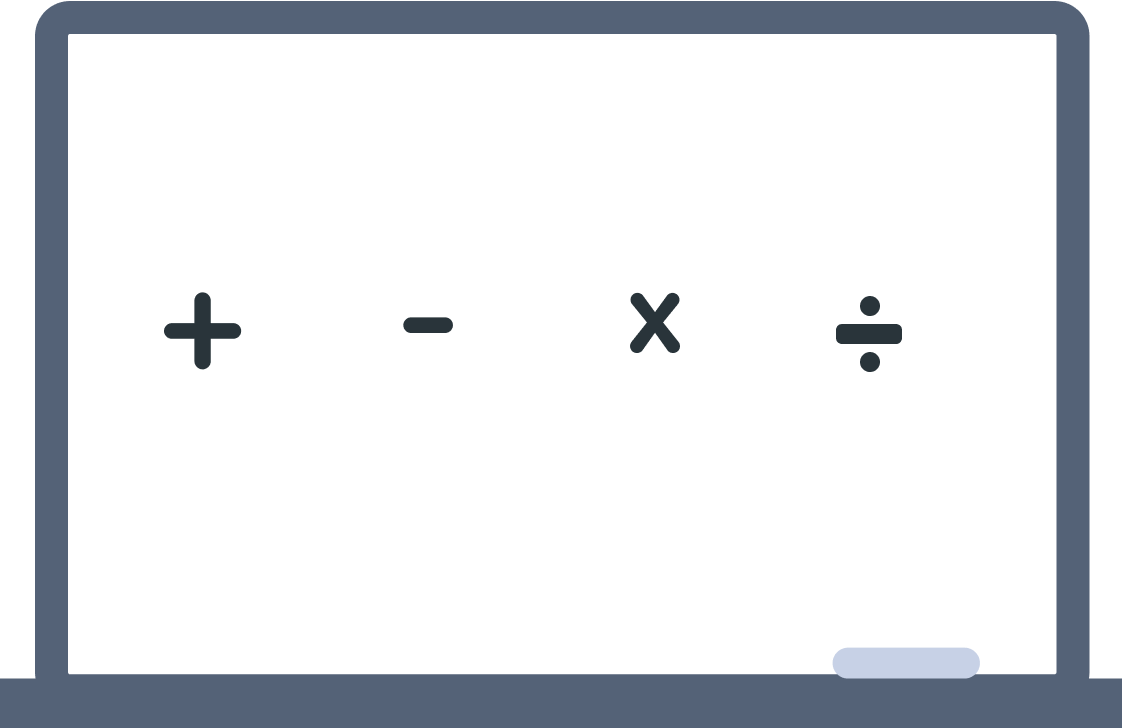
The four operations are:
Addition + Subtraction − Multiplication × Division ÷

Starting with addition, what is 17+8?

What if you have 170 and you add 27?
Let's work it out step by step ➡️
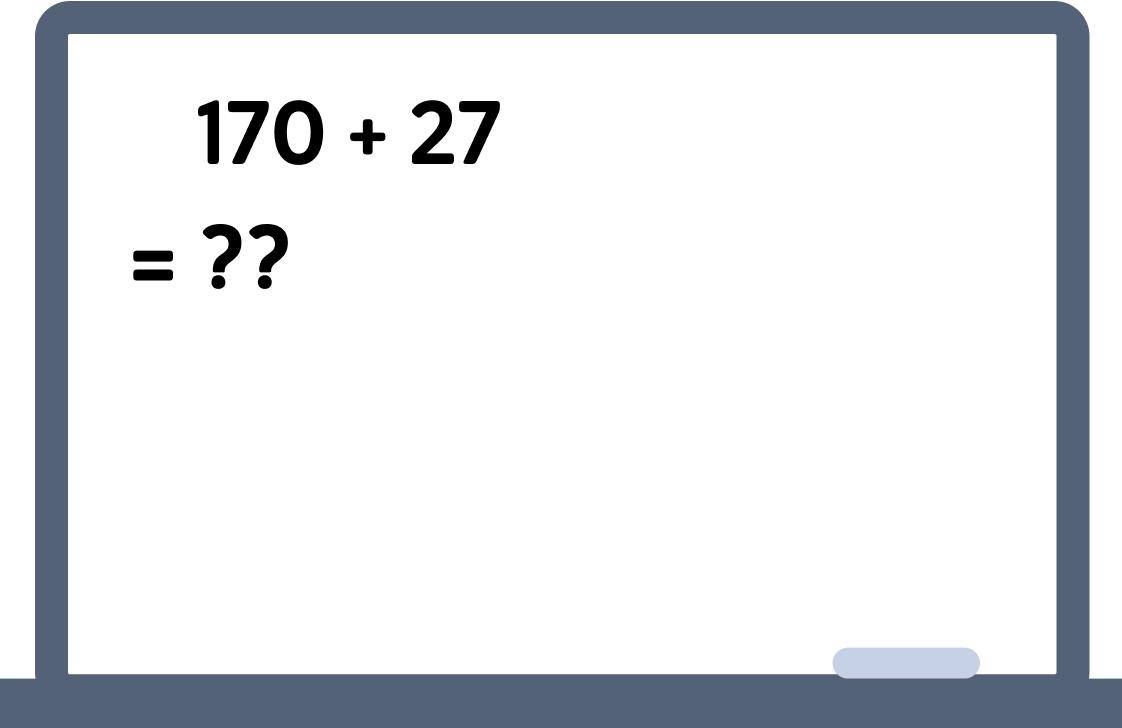
First break 27 into easier numbers
27 is made up of 2 tens and 7 units
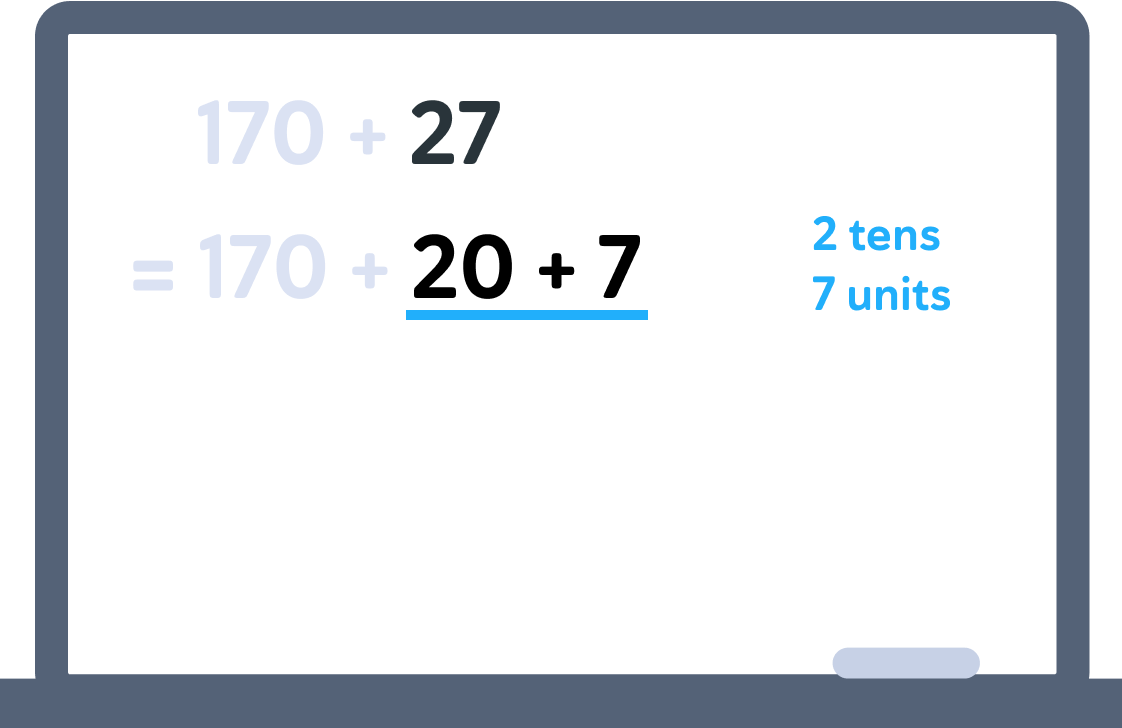
Add 20 onto 170

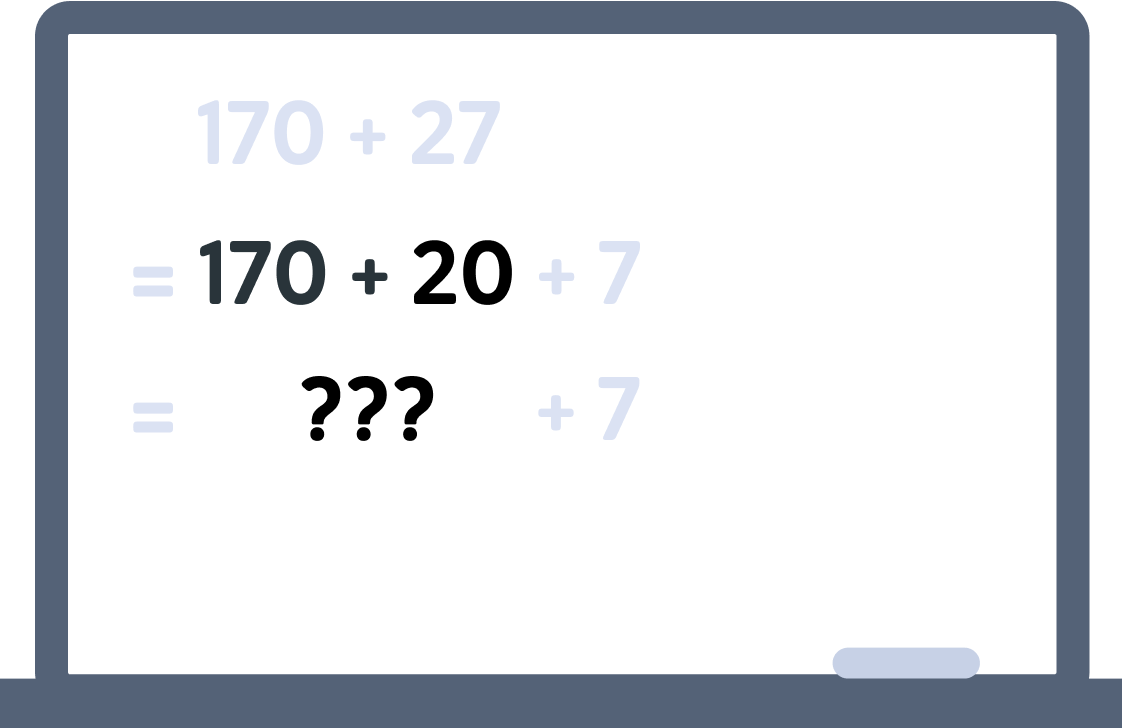
Now add 7 to 190

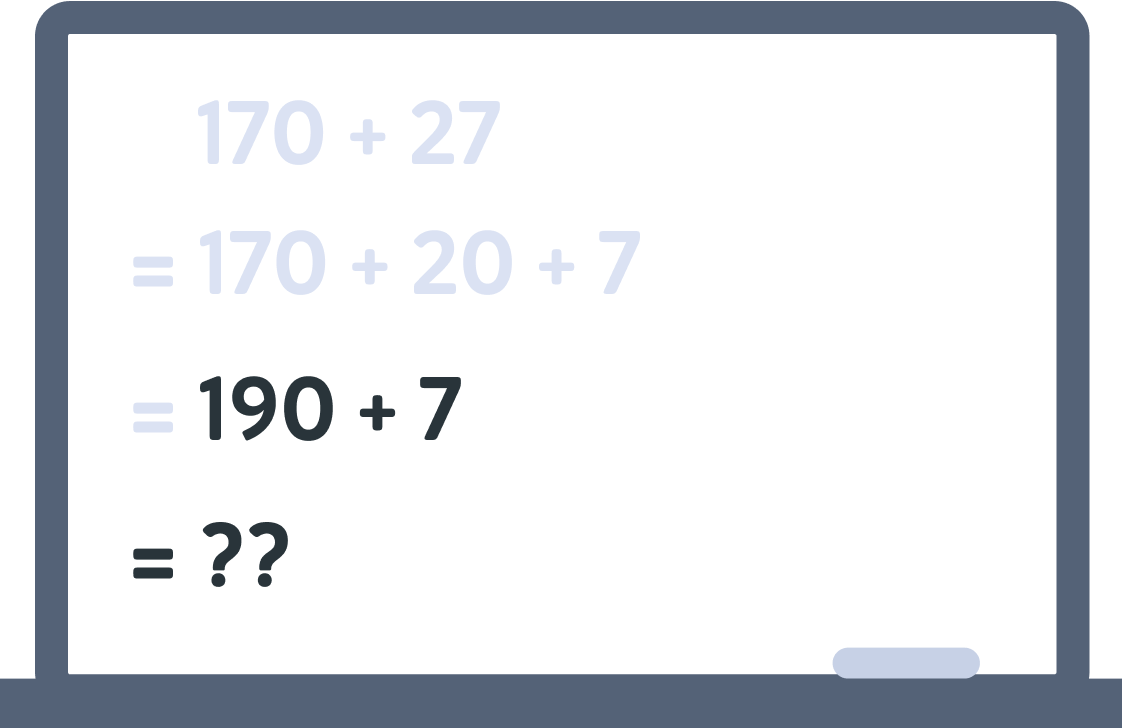
So in total...
170+27=197
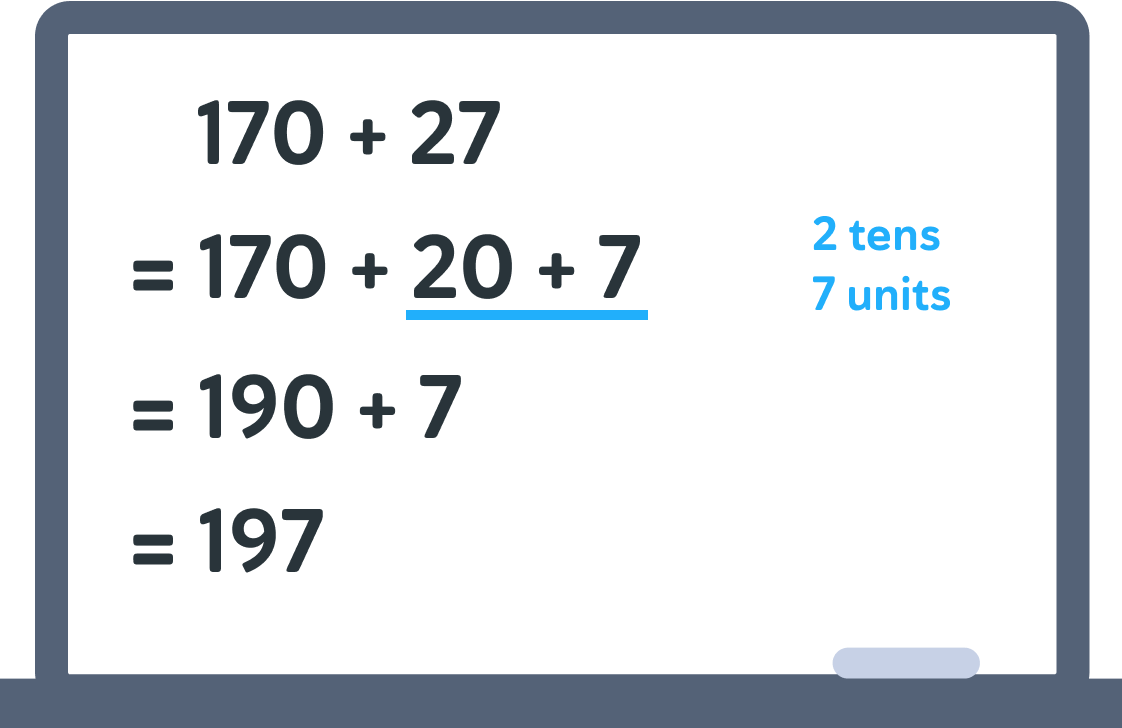
Addition is commutative.
The order of the numbers doesn't matter.
What is 14+7?

We've seen that 14+7=21. Let's change the order of our sum, what is 7+14?

We have shown that 14+7=7+14.
This is true for all additions.
What is 87+115? Remember, if it makes it easier you can work out 115+87 as addition is commutative.

Sometimes it's easier to add more than we need
then subtract the difference.
What about 143+48?
Let's work it out step by step ➡️
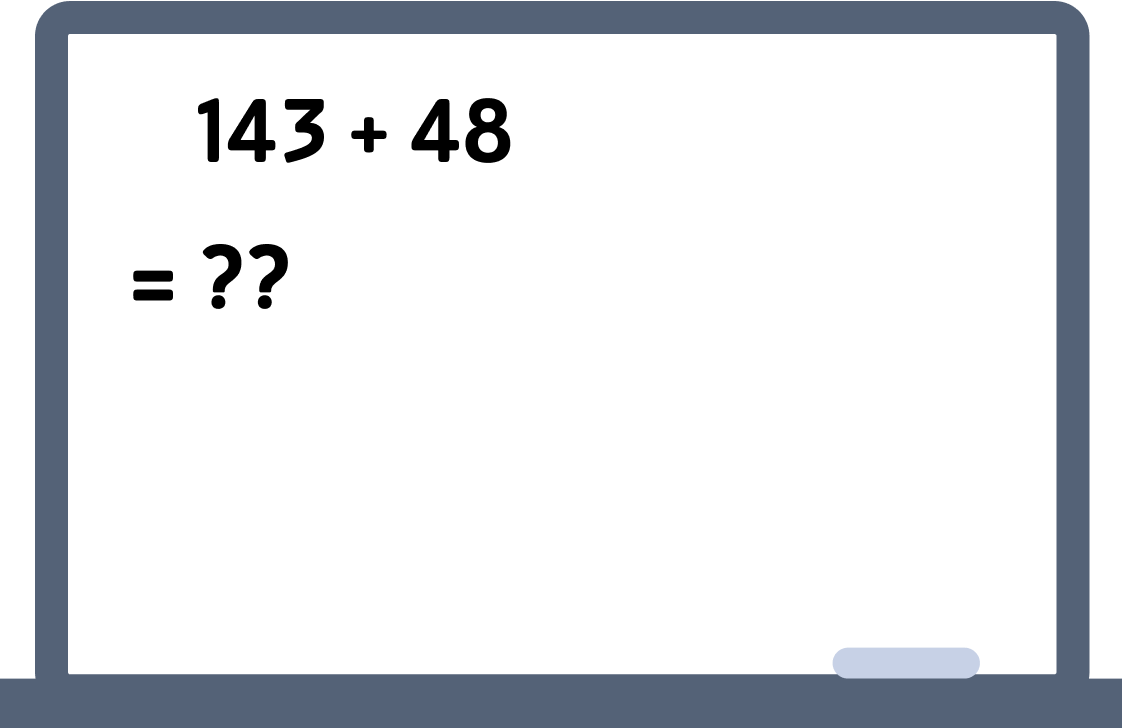
48 is two less than 50
So 48 becomes 50−2
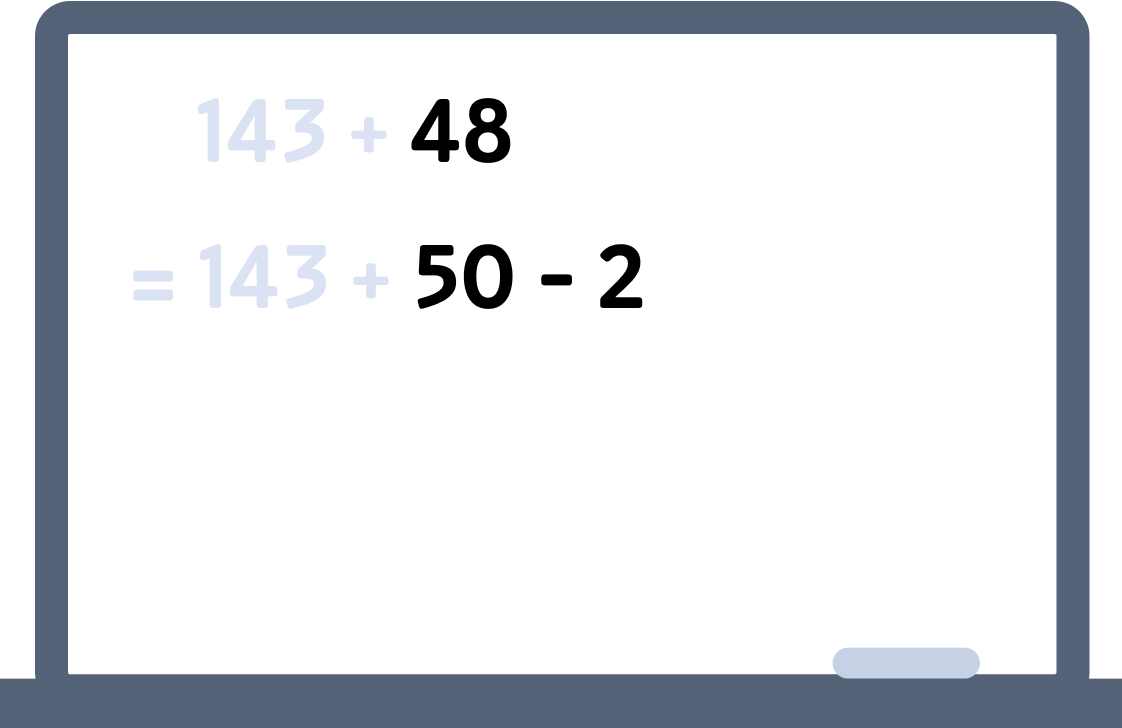
Add 50 to 143

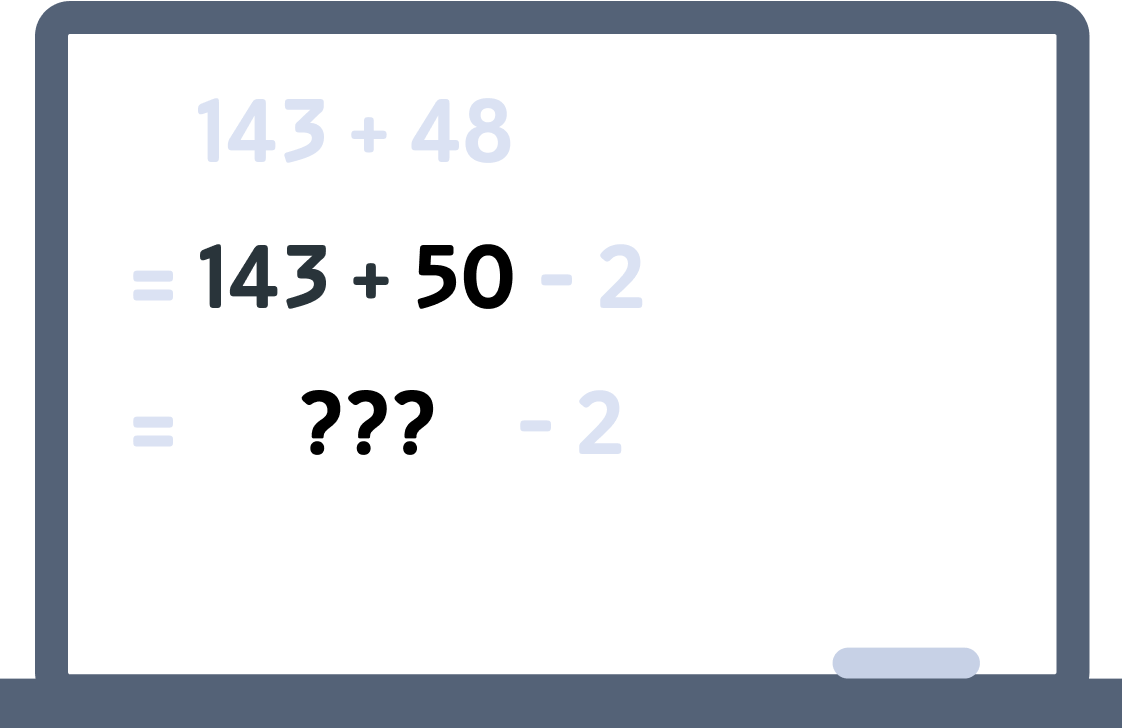
Now subtract 2 from 193

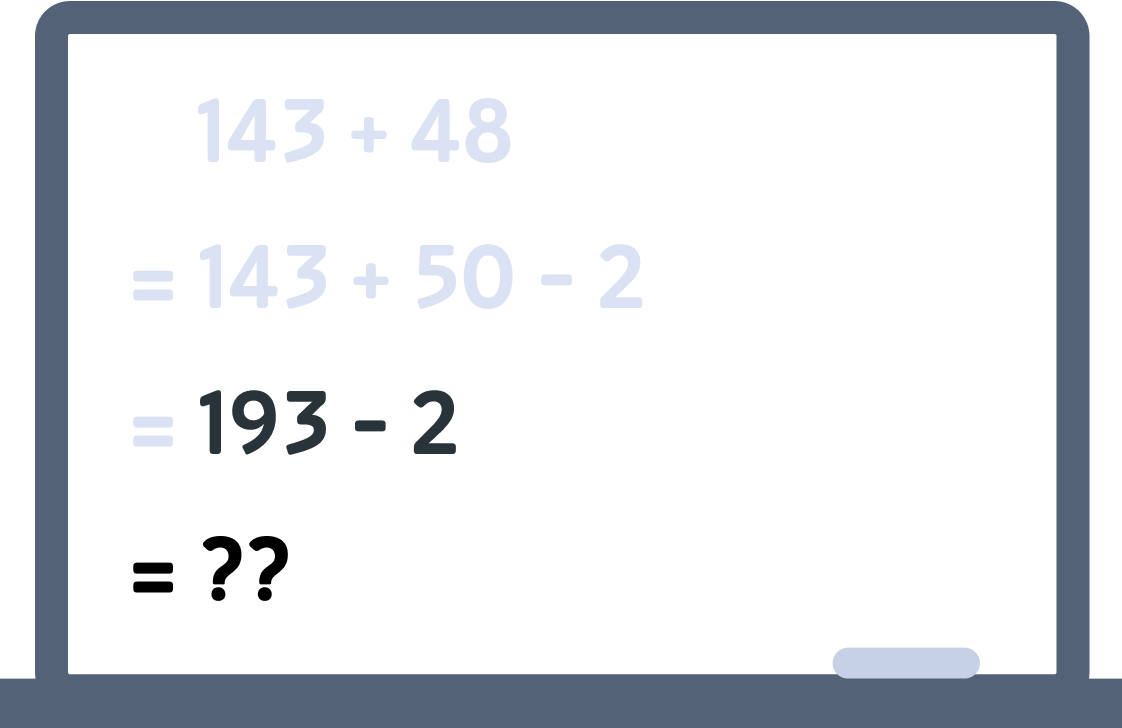
The final answer is 191
Nice! 👍
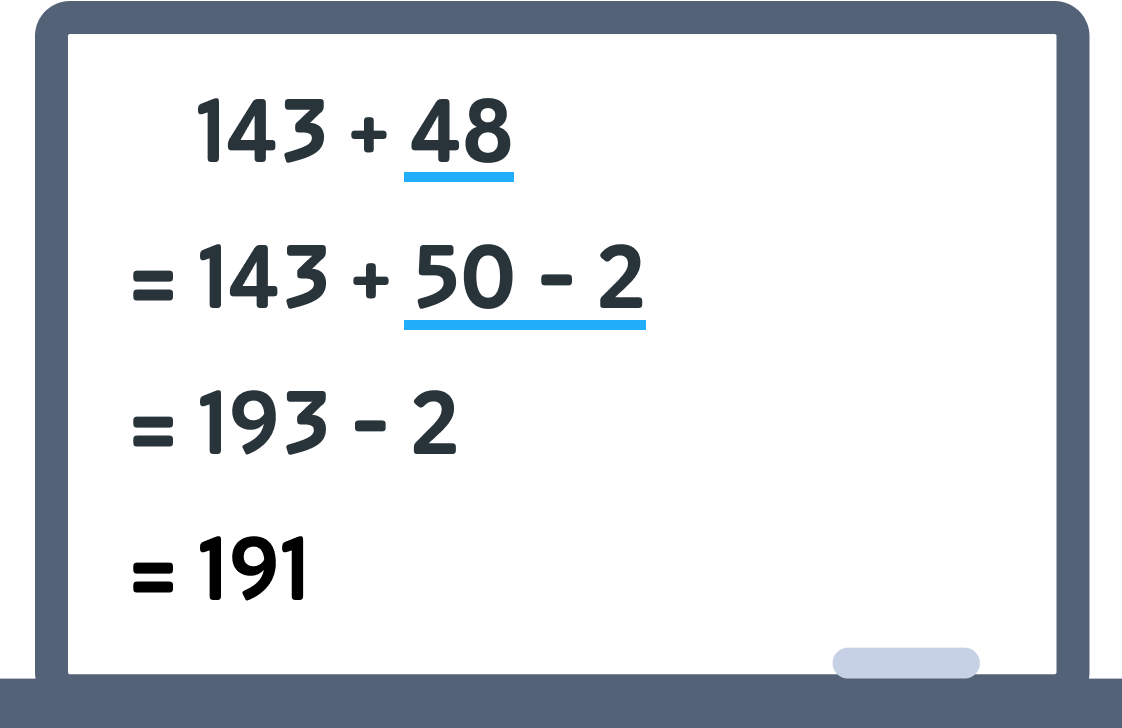
What is 122+79?

What is the opposite of addition?

Subtraction has similar strategies to addition
We can also use the words take away or minus for subtraction.
Take care with subtraction, unlike addition it is not commutative.
The order of the numbers matters 14−6=8 but 6−14=−8.
What about 186−72?
Let's work it out step by step ➡️
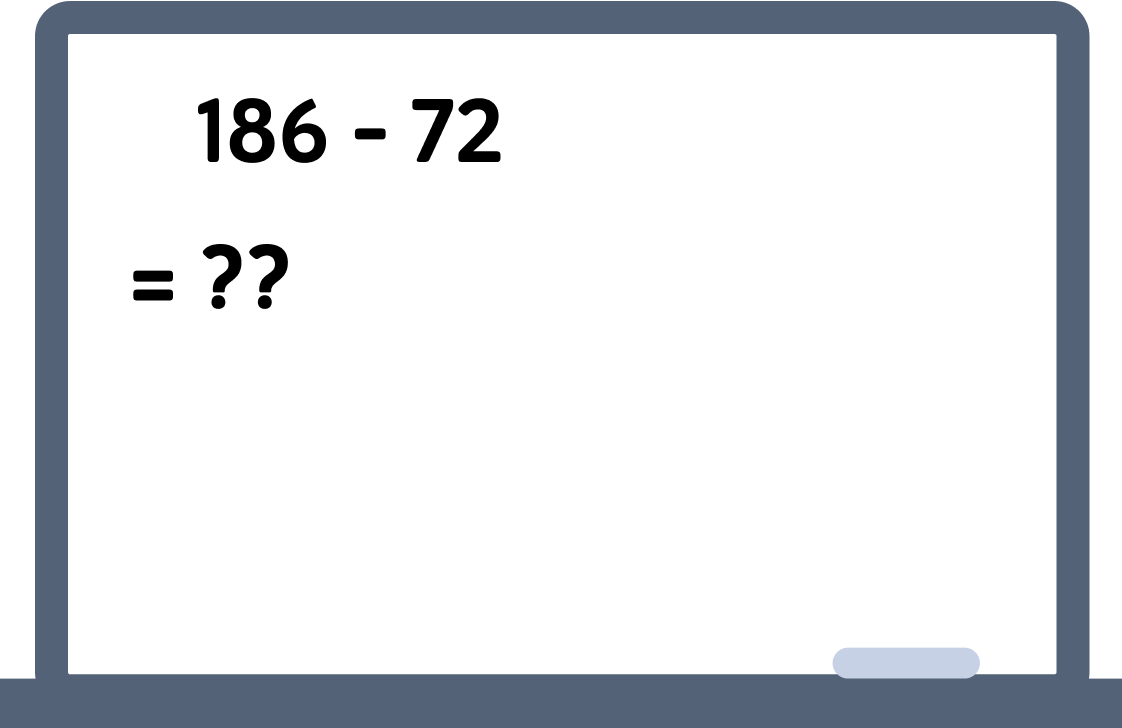
Let's break 72 into smaller parts
72 = 7 tens and 2 units
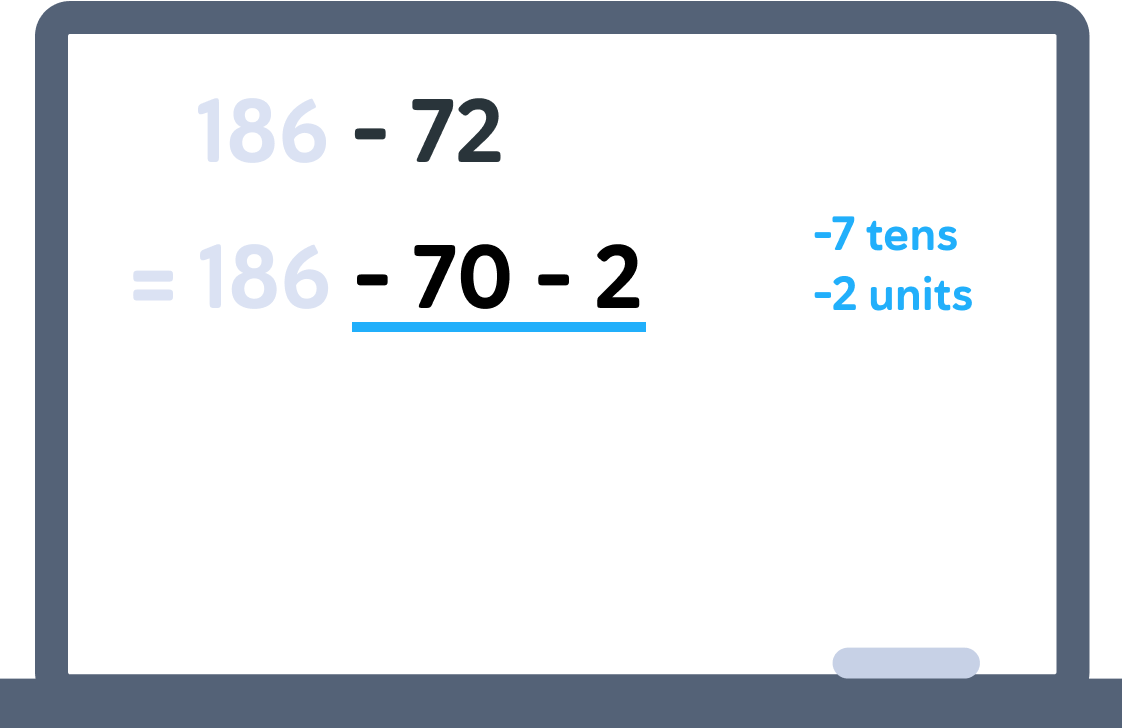
Subtract 7 tens from 186

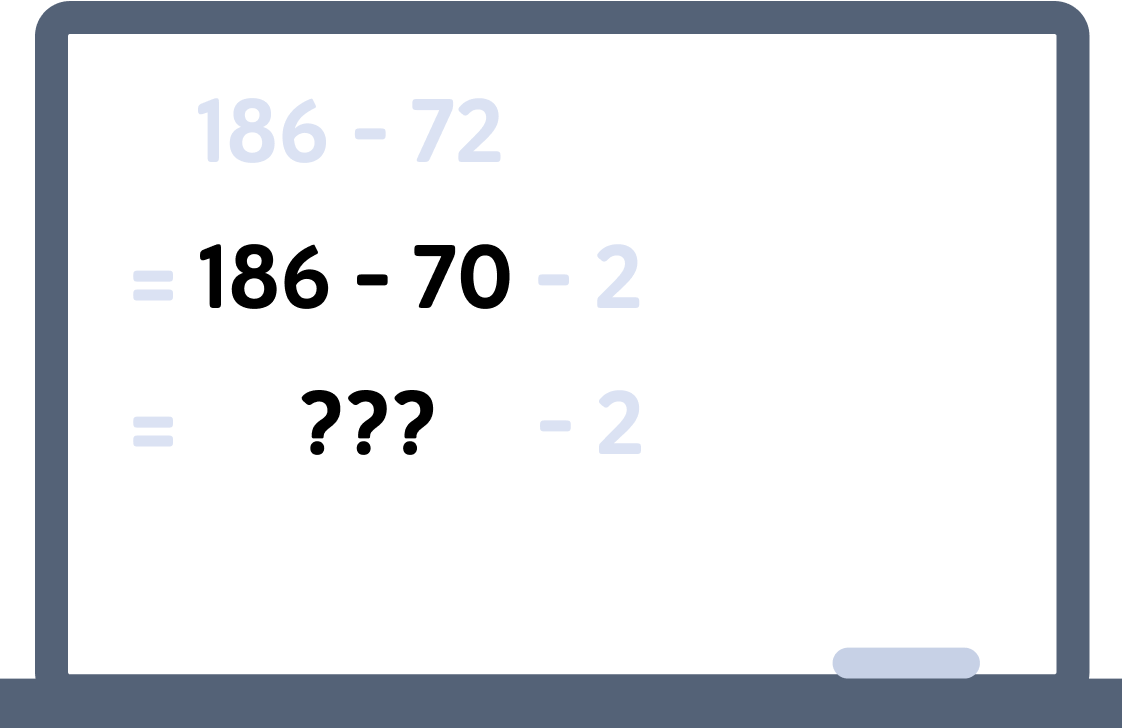
Now subtract 2 units from 116

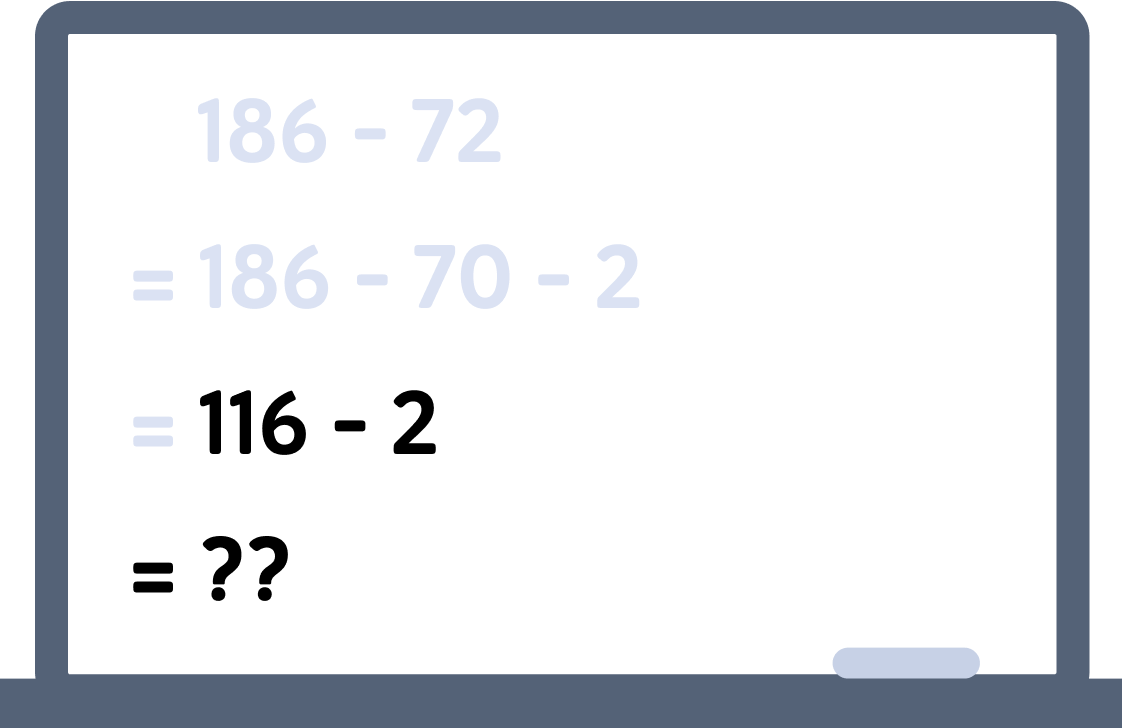
The final answer is 114
Great work! 👍
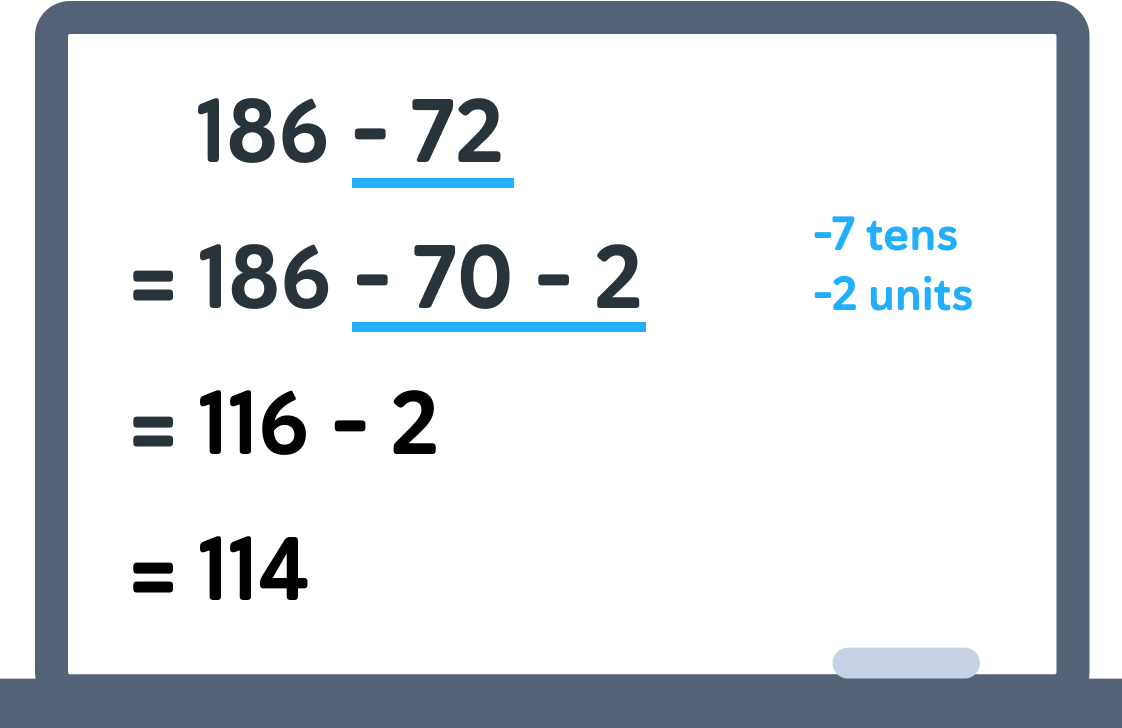
Calculate 187−53

What is 203−79?

Multiplication uses our knowledge of times tables. What is 8×4?

Let's try a harder multiplication: 17×8
We can split this into two multiplications
Let's work it out step by step ➡️
Break 17 into smaller parts 17=10+7.
We can then work out 10×8 and add it to 7×8.
First, work out 10×8

Now work out 7×8

Finally, add them together
80+56=136
The final answer is 136
Nice!
Like addition, multiplication is commutative. What does this mean?

What is 7×23? Remember that you can change the order of the numbers if it makes it easier.

What is the opposite of multiplication?

For example: 18÷3
18 can be split into groups of 3′s
We use our knowledge of the times tables, in this case6×3=18
So six groups of three go into 18 or:
18÷3=6
Work out 45÷9

Which multiplication fact can be used to work out 72÷12?

Like subtraction, division is not commutative. The order of the numbers matter. 8÷4=2 but 4÷8=0.5.
Summary! The four operations are:
Addition + Subtraction − Multiplication × Division ÷

Strategies for addition include:
Splitting a number 170+27=170+20+7 Adding on more 143+48=143+50−2
Strategies for subtraction include:
Splitting a number 187−53=187−50−3 Taking away more 357−49=357−50+1
Strategies for multiplication include:
Splitting a number 34×9=30×9+4×9
Strategies for division include:
Use knowledge of times tables 84÷7=12 as 7×12=84.
Addition and multiplication are commutative
The order of the numbers doesn't matter 115+80=80+115
15×3=3×15
Subtraction and division are not commutative
The order of the numbers does matter 10−2=8 but 2−10=−8
40÷10=4 but 10÷40=41
